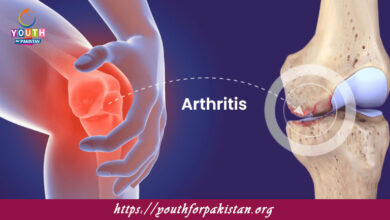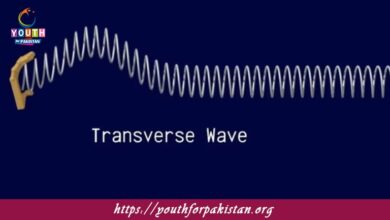Enzyme Inhibition MDCAT MCQs with Answers

Welcome to the Enzyme Inhibition MDCAT MCQs with Answers. In this post, we have shared Enzyme Inhibition Multiple Choice Questions and Answers for PMC MDCAT 2024. Each question in MDCAT Biology offers a chance to enhance your knowledge regarding Enzyme Inhibition MCQs in this MDCAT Online Test.
Which type of enzyme inhibition can be reversed by increasing the concentration of the substrate?
a) Competitive inhibition
b) Non-competitive inhibition
c) Uncompetitive inhibition
d) Mixed inhibition
In which type of inhibition does the inhibitor bind to the enzyme regardless of substrate concentration?
a) Competitive inhibition
b) Non-competitive inhibition
c) Uncompetitive inhibition
d) Mixed inhibition
Which type of enzyme inhibition involves the inhibitor binding only to the enzyme-substrate complex?
a) Competitive inhibition
b) Non-competitive inhibition
c) Uncompetitive inhibition
d) Mixed inhibition
Competitive inhibition affects which kinetic parameter of an enzyme-catalyzed reaction?
a) Vmax
b) Km
c) Both Vmax and Km
d) Neither Vmax nor Km
Non-competitive inhibition affects which kinetic parameter of an enzyme-catalyzed reaction?
a) Vmax
b) Km
c) Both Vmax and Km
d) Neither Vmax nor Km
Which type of inhibition results in a decrease in the maximum rate (Vmax) of an enzyme-catalyzed reaction?
a) Competitive inhibition
b) Non-competitive inhibition
c) Uncompetitive inhibition
d) Mixed inhibition
In competitive inhibition, the inhibitor competes with the substrate for binding to the:
a) Allosteric site
b) Active site
c) Enzyme-substrate complex
d) Regulatory site
Uncompetitive inhibitors bind to the enzyme only when it is:
a) In its free form
b) In the enzyme-substrate complex
c) At the allosteric site
d) At the regulatory site
Which of the following statements is true about mixed inhibition?
a) The inhibitor binds to the enzyme at the active site only.
b) The inhibitor can bind to either the enzyme or the enzyme-substrate complex.
c) The inhibitor decreases the Km without affecting Vmax.
d) The inhibitor binds only to the enzyme-substrate complex.
What is the effect of competitive inhibition on the Lineweaver-Burk plot?
a) The lines intersect at the y-axis.
b) The lines intersect at the x-axis.
c) The lines are parallel.
d) The lines intersect at the origin.
Which type of enzyme inhibition results in a parallel Lineweaver-Burk plot to the uninhibited reaction?
a) Competitive inhibition
b) Non-competitive inhibition
c) Uncompetitive inhibition
d) Mixed inhibition
Which type of inhibitor decreases both Km and Vmax of an enzyme-catalyzed reaction?
a) Competitive inhibition
b) Non-competitive inhibition
c) Uncompetitive inhibition
d) Mixed inhibition
In which type of inhibition does the inhibitor bind to the enzyme at a site other than the active site?
a) Competitive inhibition
b) Non-competitive inhibition
c) Uncompetitive inhibition
d) Allosteric inhibition
Which of the following is a feature of competitive inhibition?
a) It can be overcome by increasing substrate concentration.
b) It decreases the Vmax of the reaction.
c) It binds to the enzyme-substrate complex.
d) It changes the enzyme’s active site.
Which type of inhibition is characterized by the inhibitor binding to the allosteric site of the enzyme?
a) Competitive inhibition
b) Non-competitive inhibition
c) Uncompetitive inhibition
d) Mixed inhibition
What happens to the Km value of an enzyme in the presence of a competitive inhibitor?
a) It remains unchanged.
b) It increases.
c) It decreases.
d) It becomes zero.
Uncompetitive inhibition is best described by which of the following?
a) Decrease in Km with no change in Vmax
b) Increase in Km with no change in Vmax
c) Decrease in both Km and Vmax
d) Increase in both Km and Vmax
The effect of a non-competitive inhibitor on the enzyme reaction rate is to:
a) Decrease Vmax without affecting Km
b) Increase Km without affecting Vmax
c) Decrease both Km and Vmax
d) Increase both Km and Vmax
Which type of inhibition can be described as having an inhibitor that binds to a site other than the active site, changing enzyme activity?
a) Competitive inhibition
b) Non-competitive inhibition
c) Uncompetitive inhibition
d) Mixed inhibition
A characteristic feature of competitive inhibition is:
a) The inhibitor binds irreversibly to the enzyme
b) The inhibitor binds at the allosteric site
c) Increasing the substrate concentration can overcome the inhibition
d) The inhibitor decreases the affinity of the enzyme for the substrate
The Lineweaver-Burk plot for an enzyme with uncompetitive inhibition shows:
a) Parallel lines for inhibited and uninhibited reactions
b) Intersecting lines at the y-axis
c) Intersecting lines at the x-axis
d) No change in the slope of the lines
In mixed inhibition, the inhibitor affects which of the following parameters?
a) Only Km
b) Only Vmax
c) Both Km and Vmax
d) Neither Km nor Vmax
Which type of enzyme inhibition decreases Vmax but does not change Km?
a) Competitive inhibition
b) Non-competitive inhibition
c) Uncompetitive inhibition
d) Mixed inhibition
In uncompetitive inhibition, the inhibitor binds to:
a) The enzyme only
b) The enzyme-substrate complex only
c) Both the enzyme and enzyme-substrate complex equally
d) The active site of the enzyme
The presence of a non-competitive inhibitor will lead to which of the following on a Lineweaver-Burk plot?
a) Lines intersect at the x-axis
b) Lines intersect at the y-axis
c) Lines are parallel
d) No intersection occurs
Which type of inhibition is described by the inhibitor binding to a site other than the active site and altering the enzyme’s activity?
a) Competitive inhibition
b) Non-competitive inhibition
c) Uncompetitive inhibition
d) Mixed inhibition
The characteristic feature of mixed inhibition is that:
a) It affects Km but not Vmax
b) It affects Vmax but not Km
c) It affects both Km and Vmax
d) It does not affect Km or Vmax
In the presence of a competitive inhibitor, the slope of the Lineweaver-Burk plot:
a) Increases
b) Decreases
c) Remains constant
d) Becomes zero
Which of the following types of inhibition involves a decrease in both Vmax and Km?
a) Competitive inhibition
b) Non-competitive inhibition
c) Uncompetitive inhibition
d) Mixed inhibition
Which of the following is a correct statement about competitive inhibitors?
a) They bind to the enzyme-substrate complex.
b) They decrease the Vmax of the reaction.
c) They can be overcome by increasing substrate concentration.
d) They bind irreversibly to the enzyme.
Which type of enzyme inhibition will cause a change in the y-intercept of the Lineweaver-Burk plot?
a) Competitive inhibition
b) Non-competitive inhibition
c) Uncompetitive inhibition
d) Mixed inhibition
The effect of uncompetitive inhibition on the enzyme-catalyzed reaction includes:
a) Increase in Km without affecting Vmax
b) Increase in both Km and Vmax
c) Decrease in both Km and Vmax
d) No change in Km or Vmax
Which type of inhibitor binds only to the enzyme-substrate complex and not to the free enzyme?
a) Competitive inhibitor
b) Non-competitive inhibitor
c) Uncompetitive inhibitor
d) Mixed inhibitor
A non-competitive inhibitor binds to which part of the enzyme?
a) The active site
b) The enzyme-substrate complex
c) A site other than the active site
d) The regulatory site
Which enzyme inhibition type is characterized by a decrease in the reaction rate without changing the affinity for the substrate?
a) Competitive inhibition
b) Non-competitive inhibition
c) Uncompetitive inhibition
d) Mixed inhibition
Which type of inhibition can be characterized by an inhibitor binding at an allosteric site and affecting enzyme activity?
a) Competitive inhibition
b) Non-competitive inhibition
c) Uncompetitive inhibition
d) Mixed inhibition
If you are interested to enhance your knowledge regarding Physics, Chemistry, Computer, and Biology please click on the link of each category, you will be redirected to dedicated website for each category.





